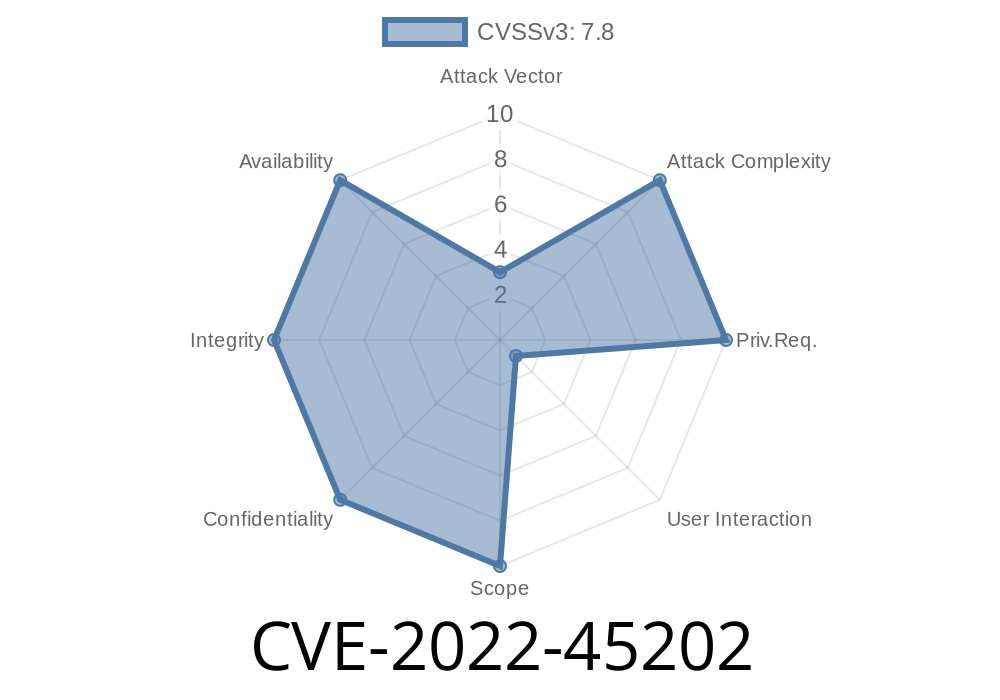A critical vulnerability has been discovered in the GPAC v2.1-DEV-rev428-gcb8ae46c8-master, identified as CVE-2022-45202. In this long read post, we will be discussing the vulnerability details, the code snippet that caused this issue, and the links to the original references. We will also explore the exploitation details, which attackers could use to their advantage.
Vulnerability Details
The main source of the vulnerability lies in a stack overflow that exists within the function 'dimC_box_read' (located in the file isomedia/box_code_3gpp.c). This can be exploited by a remote attacker to execute arbitrary code on the target system. The issue arises because the affected function does not properly validate the input size before copying the data to a fixed-size buffer.
The problematic code snippet in the dimC_box_read function is as follows
GF_Err dimC_box_read(GF_Box *s, GF_BitStream *bs)
{
GF_Err e;
GF_DimensionInfoPredefined *ptr = (GF_DimensionInfoPredefined *)s;
e = gf_isom_full_box_read(s, bs);
if (e) return e;
ptr->reserved = gf_bs_read_u16(bs);
ptr->profile_level = gf_bs_read_u8(bs);
ptr->pathComponents = gf_bs_read_u8(bs);
ptr->fullRequestHostSymbols = gf_bs_read_u8(bs);
ptr->stream_type = gf_bs_read_u8(bs);
ptr->contains_redundant = gf_bs_read_u8(bs);
return GF_OK;
}
As we can see, the function reads a series of values from the input bitstream but never checks if the input size is smaller or larger than the expected size. This leads to the stack overflow when a malicious input is provided by an attacker.
Exploit Details
To exploit this vulnerability, an attacker must craft a malicious file that contains a carefully designed box with incorrect data sizes. This can be done by modifying the input values mentioned in the code snippet above. When this file is passed to the GPAC player for processing, the stack overflow will be triggered, and the attacker can now execute arbitrary code on the target system.
Mitigation Steps
The best way to mitigate this vulnerability is to update to the latest version of GPAC or apply the patch provided by the developers. Additionally, it is crucial to validate user inputs and apply secure coding practices to prevent similar vulnerabilities in the future.
References
Original reference links to the vulnerability details and the affected codebase can be found in the following sources:
1. GPAC's GitHub Repository
2. CVE-2022-45202 Details
3. GPAC Vulnerability Patches
Conclusion
Stack overflow vulnerabilities such as CVE-2022-45202 can have serious consequences if not addressed in a timely manner. By gaining a better understanding of the issue and applying appropriate security measures, developers and users can safeguard their applications and systems from such attacks. It is important to stay informed about the latest security updates and practice secure coding methods to prevent similar vulnerabilities in the future.
Timeline
Published on: 11/29/2022 04:15:00 UTC
Last modified on: 12/01/2022 21:10:00 UTC
